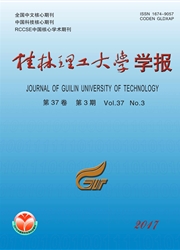

 中文摘要:
中文摘要:
对采自太行山西侧的沁水盆地沁参1井及邻区12个样品进行了磷灰石裂变径迹分析,结合太行山东侧石家庄-邢台地区9个样品的磷灰石/锆石裂变径迹结果,综合分析表明:太行山在新生代的抬升是不均衡的,前新生代的剥蚀夷平-准平原化后,古近纪初经历了隆升,再到古近纪末的剥蚀夷平,最后到新近纪的快速隆升。现今太行山的主体是新近纪以来隆升的,即23~18 Ma以来,其中快速隆升期为上新世以来,隆升幅度为4000 m,隆升的平均速率为0.18 mm/a。新近纪以来太行山的隆起主要来自于3个因素:①欧亚板块碰撞的远程效力;②热冷却;③构造负荷综合作用。新生代太行山的抬升与其周缘盆地和山脉的演化存在着对应关系,为一个区域性事件。
 英文摘要:
英文摘要:
Apatite fission track rmochronolgy analysis from 12 samples in Well Qincan 1 of Qinshui basin,com-bined with the apatite -zircon fission track analysis from 9 samples of Shijiazhuang Xingtai,the results show that the uplifting of Taihang Mountains was unbalanced.Moreover,Taihang Mountains experienced pre-Cenozo-ic denudation-peneplaned process to uplift-erosion of the Paleogene,till the rapid uplifting of the Neogene. Since 23-18 Ma,Taihang Mountains main body formed.The rapid uplifting occurred in Taihang Mountains during the Pliocene,about 4 000 m uplifting and the average rate of uplifting 0.18 mm/a.The Neogene uplif-ting of Taihang Mountains was attributed to three factors:① the remote effect of the Eurasian plate collision;② the geothermal cooling;③ the structural loads.The Cenozoic uplifting events are corresponding with the tectonic evolution of the adjacent basins and mountains,a regional uplifting event in North China.
 同期刊论文项目
同期刊论文项目
 同项目期刊论文
同项目期刊论文
 期刊信息
期刊信息
